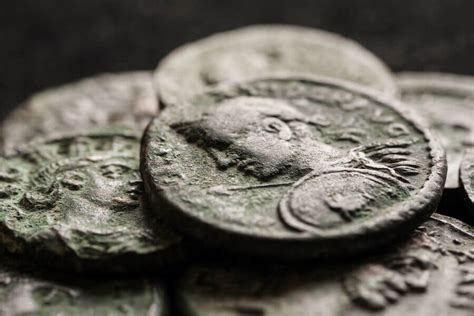The world of numismatics, the study of coins and currency, is filled with fascinating discoveries and intriguing artifacts. Among the most remarkable of these is the Lydian electrum coin, widely regarded as the oldest known coin in the world. Dating back to around 600-650 BCE, this ancient piece of currency has captured the attention of historians, archaeologists, and coin collectors alike.

Origins and Evolution
The Lydian electrum coin originated in the ancient kingdom of Lydia, located in what is now western Turkey. Lydia was a prosperous and advanced civilization, and its coinage played a vital role in its economic and political development. The first electrum coins were struck in the city of Sardis, the capital of Lydia, and quickly gained widespread use throughout the region.
Electrum, a naturally occurring alloy of gold and silver, was the primary material used in the production of Lydian coins. The coins were typically disc-shaped and stamped with simple designs, often featuring the head of a lion or a stag. The weight of the coins varied, with the most common denominations being the stater (approximately 14 grams) and the half-stater (approximately 7 grams).
Significance and Impact
The invention of the Lydian electrum coin marked a significant milestone in human history. It represented the transition from barter systems to a standardized form of currency, facilitating trade and commerce. The coins provided a convenient and reliable means of exchange, reducing the need for bulky and cumbersome goods such as livestock or grain.
Lydian electrum coins gained wide acceptance beyond the borders of Lydia. They were used in trade throughout the Mediterranean region, including Greece, Egypt, and Persia. The coins also served as a source of inspiration for other civilizations, leading to the development of coinage in various parts of the world.
Modern Discoveries and Research
Over the centuries, numerous Lydian electrum coins have been discovered through archaeological excavations and private collections. These coins provide valuable insights into the economic and cultural practices of ancient Lydia. In recent decades, technological advancements have enabled researchers to analyze the coins more closely, revealing details about their composition, manufacturing techniques, and historical significance.
One of the most important discoveries related to Lydian electrum coins was made in 1984 at the site of the ancient city of Sardis. During excavations, archaeologists unearthed a hoard of over 200 electrum coins, providing a glimpse into the monetary system of Lydia. These coins have been extensively studied, shedding light on the economic practices and trade networks of the ancient world.
Historical Context
The Lydian electrum coin emerged during a period of great economic and political change in the Mediterranean region. The kingdom of Lydia controlled a vast and prosperous territory, and its coinage reflected its economic and military power. The coins were used to facilitate trade, pay taxes, and finance military campaigns.
Lydian coins also played a role in the development of the Greek monetary system. Greek cities such as Ephesus and Miletus adopted the Lydian coinage system, adapting it to their own needs. The influence of Lydian coins can be seen in the designs and weight standards of early Greek coins.
Legacy and Influence
The Lydian electrum coin has left a lasting legacy in the world of numismatics and beyond. Its invention marked the beginning of a new era in human civilization, characterized by the use of standardized currency. The coin influenced the development of coinage in other cultures and played a vital role in the economic and political systems of the ancient world.
Today, Lydian electrum coins are highly sought after by collectors and museums around the world. These ancient artifacts offer a tangible connection to the past and provide valuable insights into the economic and cultural practices of one of the most influential civilizations of antiquity.
Table 1: Lydian Electrum Coin Denominations
| Denomination | Weight (grams) |
|---|---|
| Stater | Approximately 14 |
| Half-stater | Approximately 7 |
| Third-stater | Approximately 4.6 |
| Sixth-stater | Approximately 2.3 |
Table 2: Composition of Lydian Electrum Coins
| Metal | Percentage |
|---|---|
| Gold | 55-60% |
| Silver | 40-45% |
| Other metals (copper, lead, zinc) | Trace amounts |
Table 3: Historical Significance of Lydian Electrum Coins
| Significance | Description |
|---|---|
| Transition from barter to standardized currency | Facilitated trade and commerce |
| Economic and political symbol of Lydia | Reflected the prosperity and power of the kingdom |
| Inspiration for other civilizations | Influenced the development of coinage in Greece, Persia, and beyond |
Table 4: Lydian Electrum Coins in Museums
| Museum | Location | Notable Collections |
|---|---|---|
| British Museum | London, UK | One of the largest collections of Lydian electrum coins in the world |
| Metropolitan Museum of Art | New York City, USA | Includes rare and well-preserved examples |
| Archaeological Museum of Sardis | Sardis, Turkey | Houses the hoard of electrum coins discovered in 1984 |
| Louvre Museum | Paris, France | Features a selection of Lydian electrum coins from various periods |


